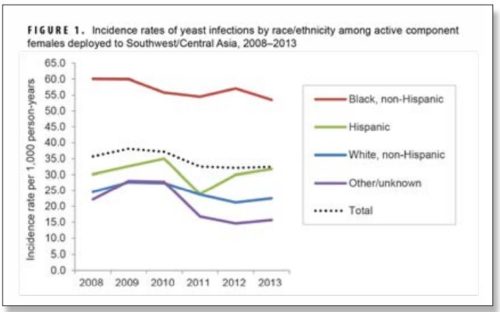FALLS CHURCH, VA — With women accounting for more than 15% of all active duty forces, the health needs of women are increasingly coming to the fore. Women represent nearly 21% of the Air Force, making addressing their unique needs particularly critical for mission readiness. In response, the service has introduced a growing number of health initiatives through the Women’s Initiative Team’s (WIT) Female-Specialized Health Care Programs.
“Our goal is to remove barriers so that it is easier for women to continue serving in our Air Force,” said Lt. Col. Jeanette Anderson, perinatal nursing consultant to the U.S. Air Force Surgeon General. “If we can provide the support they need from a health perspective, then we can ensure they are able to stay in the Air Force and are medically ready.”
Medical issues often drive women’s departure from the service. “We have discovered that one of the reasons women leave the Air Force has been tied to medical barriers,” said Maj. Emily Yates, a WIT co-lead and health care integrator with the 633rd Medical Group at Joint Base Langley-Eustis, VA. “Through our health-focused line of effort, we are working on strengthening a health care system that meets our Airmen’s needs.”
In the last year, the Air Force has addressed health issues arising from the former requirement that women with longer hair wear it in a tight bun, which can cause migraines, hairline cysts and hair loss, and established standardized accommodations for lactating mothers. In addition, the service updated its convalescent leave policy to allow up to 42 days of leave, separate from parental leave policies, for Airmen and Guardians who have experienced a miscarriage or stillbirth or place a baby for adoption immediately after birth.
“Prior to this, women would only be eligible for parental leave if they had a qualifying birth event, meaning they delivered a baby and took that baby home with them,” said Lt. Col. Larissa Weir, chief women’s health consultant to the Air Force Surgeon General. “But for women who experienced a loss, we were seeing significant variation in the duration of leave they received. We put together this update to standardize that leave based upon how far along in the pregnancy they were.”
Infection Risk in Deployed Women
Women’s health issues affect all services, not just the Air Force, and other services have also stepped up their training and health care specific to women’s needs. The need is clear. “History has often demonstrated that the course of battle is influenced more by the health of the troops than by strategy or tactics,” notes the Army Public Health Center’s guide to deployment health for women.
Women in the field often have restricted access to menstrual products and contraception. They also often lack access to private toilet facilities as well as hand-washing and shower opportunities, all of which are associated with greater risk of urinary tract and vaginal infections. Holding urine to avoid dirty latrines or public urination or undressing when in full battle gear, or reducing fluid intake, can contribute to these infections. In response, the DoD has increased awareness and encouraged use of the female urinary diversion device, which allows women to urinate through the fly of their uniform while standing or sitting.
Other programs have addressed the need to better prevent and manage vaginal infections. A study that looked at records for women deployed in Southwest and Central Asia from 2008 to 2013 found that nearly 3,000 of those women experienced a clinically significant vaginal yeast (Candida) infection that led them to seek care at a medical facility, for an incidence rate of 35.1 per 1,000 person years. Recurrent yeast infections afflicted 386 women, bringing the overall rate to 39.8 per 1,000 person years. That meant one in every 37 deployed women dealt with the pain and distraction while in a war zone. The Air Force and Army reported the highest incidence rates, which were also higher among enlisted women, Black/non-Hispanic women, and those in the communications/intelligence and motor transport fields.1
The study authors noted that the reported rates “likely underestimate the true incidence of these infections among deployed female service members. In preparation for overseas deployments, female service members receive guidance on how to avoid genitourinary infections such as yeast infections; they are also encouraged to bring over-the-counter yeast infection medication with them.” Women who treated themselves were not included in the data, nor were those who sought care from their unit’s medical personnel.
Consequently, “the infections summarized [in the study] likely represent the more symptomatically severe infections and/or those that are unresponsive to over-the-counter treatment,” they concluded. “Such infections may require more aggressive oral or vaginal treatment courses under the direction of a clinician.”
- Armed Forces Health Surveillance Center (AFHSC). Vaginal yeast infections while deployed in Southwest/Central Asia, active component females, U.S. Armed Forces, 2008-2013. MSMR. 2014 Aug;21(8):13-5. PMID: 25162498.

